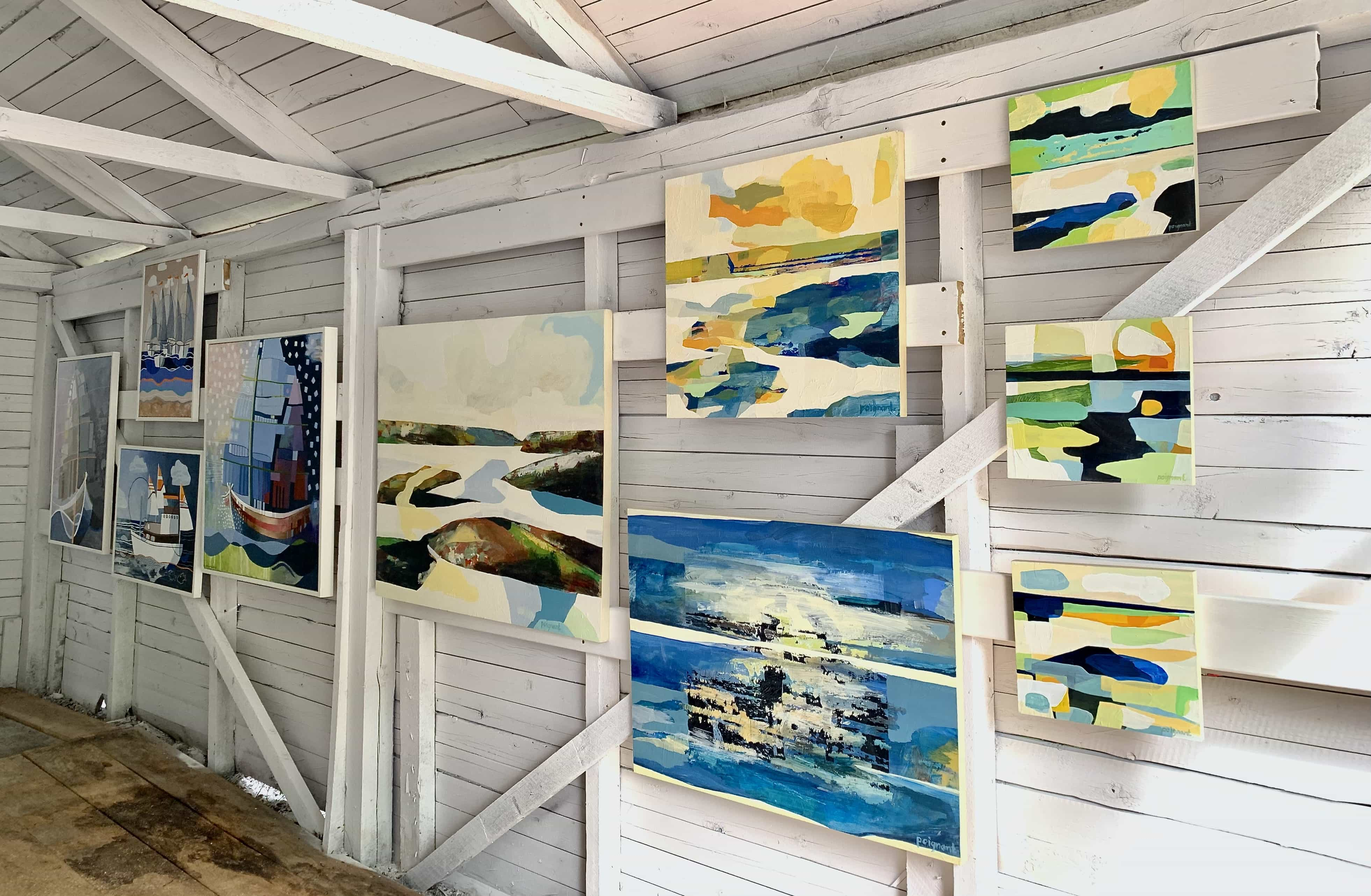
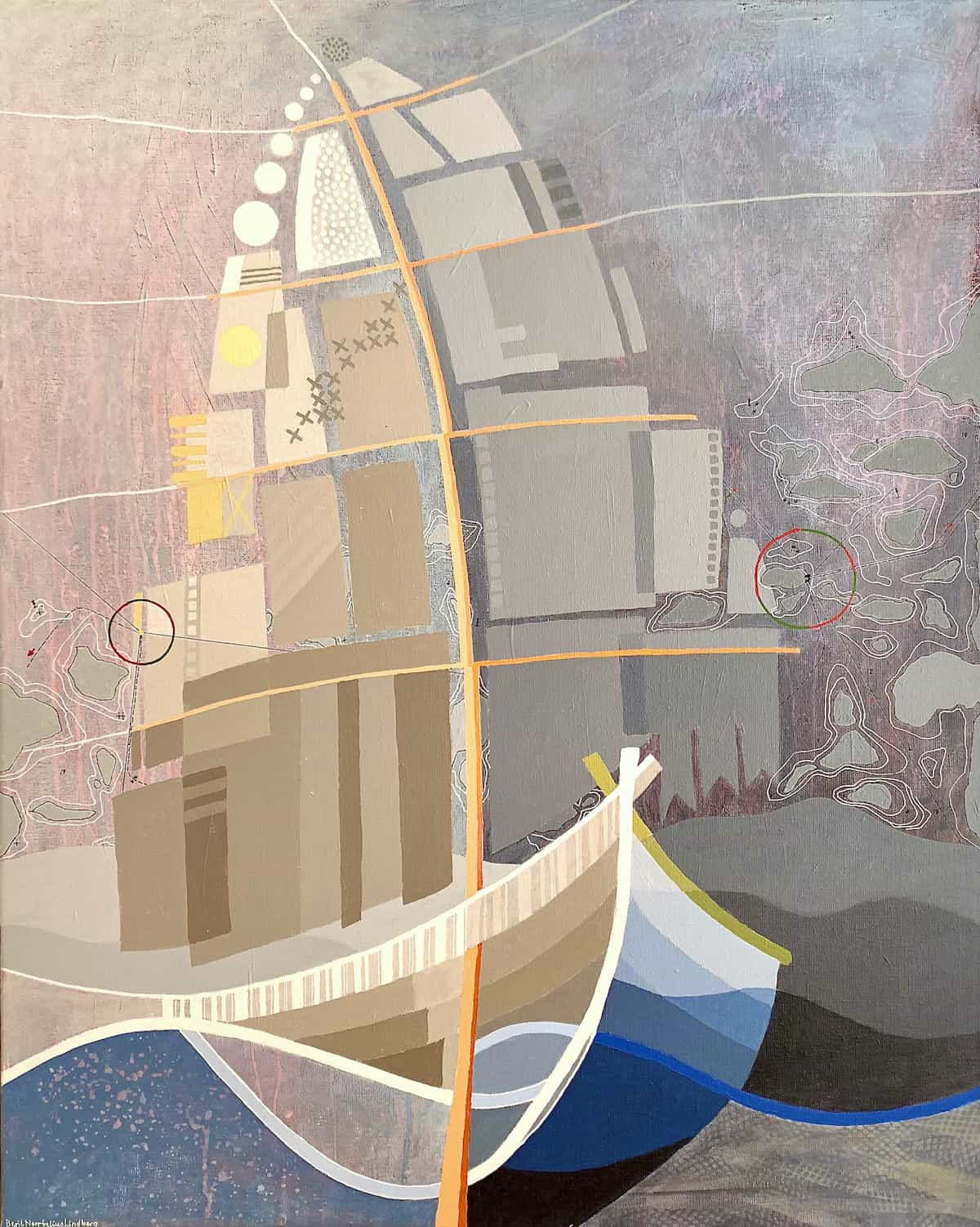
Summer exhibition Mälarbaden 17th - 26th of June 2022
This year, Lindberg-on-Sea Art Gallery will for the first time launch its summer exhibition in my childhood neighborhood, Mälarbaden, where the exhibition during one week will be housed at the ‘Lindberg’ red garage in the crossing Hasselbacksvägen/Gamla vägen.
The group exhibition, which begins with an Opening on Friday the 17th of June with bubbles in the glasses, introduce some of the artists which Lindberg-on-Sea Art Gallery represents to the art scene in Mälarbadens.
Click on the images above to read more about the artists and their artworks.
Opening hours
Monday - Thursday 3pm - 6pm
Saturdays and Sundays 12pm - 3pm
Closed Midsummer Eve
For viewings outside of the opening hours, please contact the gallery
+46 (0) 70 308 02 49, info@lindbergonsea.com
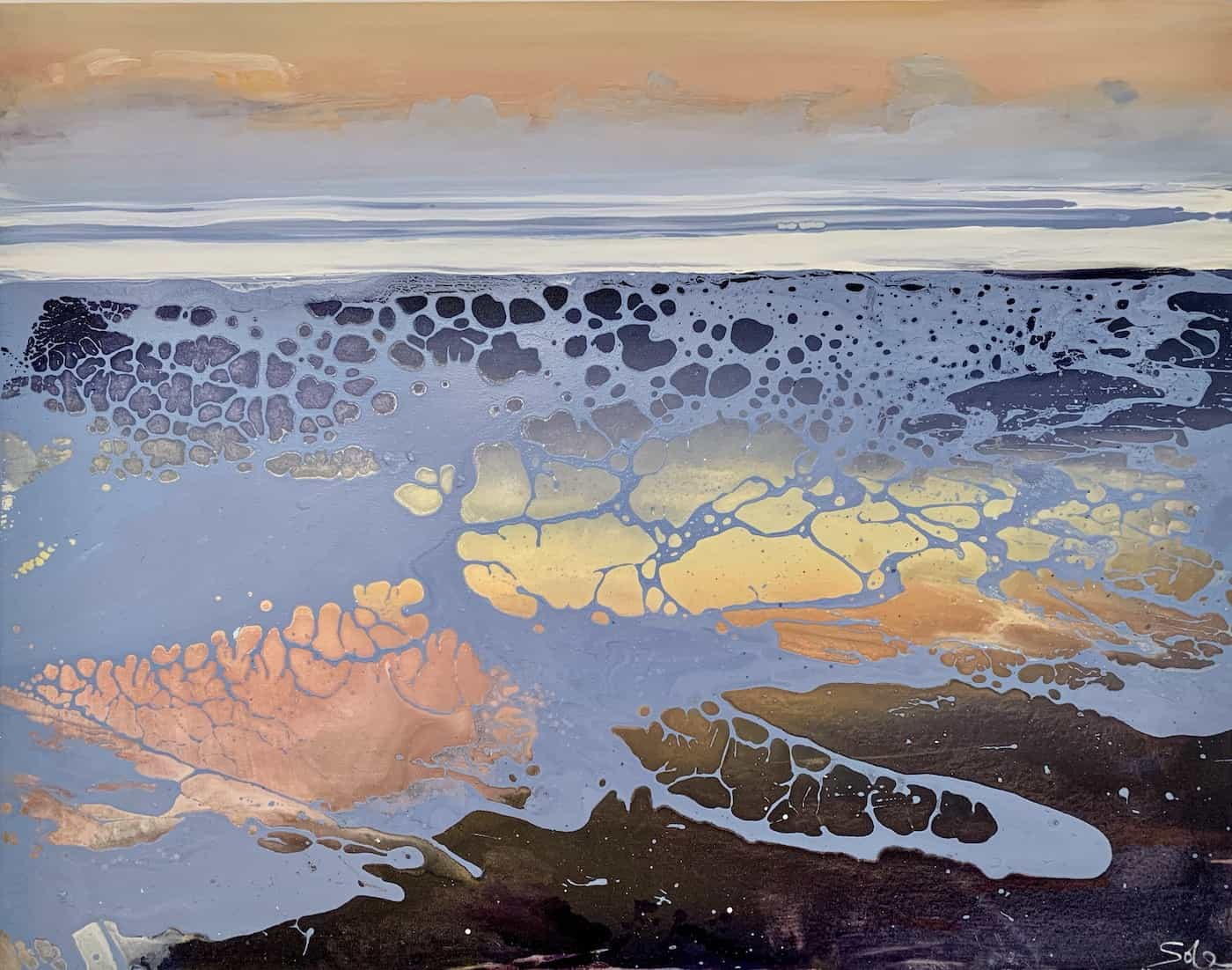 Michael Sole
Michael Sole
For over a decade, stormy seascapes have truly embodied Michael Sole’s artistry.
Dramatic storm sceneries, taken from places and moments which makes the basis of Sole’s inspiration and passion, represents the artist’s view that - in painting - “energy must be met by energy”: powerful natural forces should be recreated through energetic and confident painting techniques;
“I paint what gets my heart beating fast as I know I will put, intuitively, my all into it! Windy rainy stormy days and movement in nature, strong colour contrasts in the sky and in the sea. I quite often pick the subjects that I know my materials and processes compliment well as I know when I start painting I get as inspired by the materials and processes as I do from the subject itself.”
The technique which Sole uses within his creative process is ‘Involuntarylism’, which to Sole is the idea of involuntary mark making through the ‘puppeteering’ of paint, where the artist’s involvement is purely to manipulate the paint, canvas, colours and consistencies, allowing the painting a life of its own to reach the finished result;
“The concept behind my paintings completely relies upon the idea of involuntary mark making. How the materials react with one another and how I go about applying them to the canvas. With this concept in mind, nature, with its natural geometry, is the perfect subject as a base to experiment from.”
Read more about Michael Sole and browse his catalogue
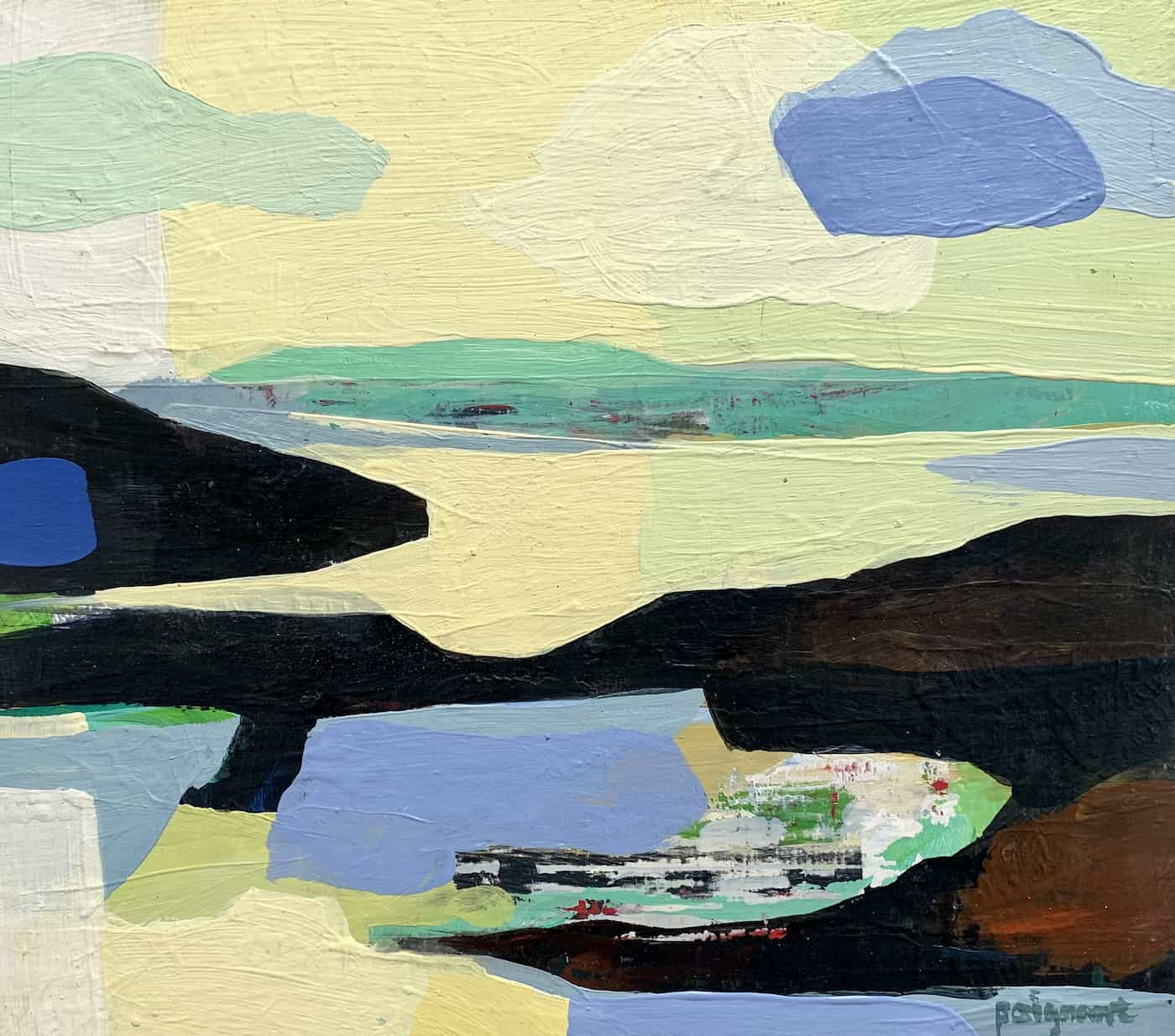 Christian Poignant
Christian Poignant
With nature as starting point and a strong connection to water, sea and coast Christian Poignant creates his artworks in the borderline between the abstract and the figurative.
The artworks often consist of segments of shape where encounters and reflections, light, air and contrast are of great importance.
The artist’s childhood years in the Swedish archipelago was marked by the archipelago’s fishermen, fishing and boats, cliffs and slabs and made great impressions in the artist’s awareness;
”The titles of the paintings and the theme of the exhibition are taken from the daily shipping forecasts.
The memories of growing up in the archipelago of Oxelösund with a shushing grandfather pressing his ear to the radio set. The kids had to tread lightly and stay dead quiet.
I still listen to the shipping forecasts in the studio and follow the coast from south to north. It is incredibly comforting and soothing and brings memories and atmospheres to life.”
The inspiration for his artworks, Poignant often collects from his long kayak trips along the Swedish east coast;
“The paddling gives a directness and closeness to the sea, water and nature and an exposure to different weathers with sudden changes.
Here I find the colours and shapes which I use in my painting. Smooth cliff slabs, crevasses in the rock, rainwater with brilliantly green algae, bird droppings and intense yellow lichens on the cliffs etches in my memory. And the weather, the clouds, the reflections, inconstancies.“
Read more about Christian Poignant and browse his catalogue

Berit Norrbelius Lindberg
“With colour palettes and silhouettes I take you out to sea, channels and voluminous landscapes.”
Berit Norrbelius Lindberg’s imaginative and dreamlike ship and boat paintings are a display in unitary motifs which, at closer look, are made up by a great number of separate components and geometrical shapes. A testimony to the artist’s mathematical background which give the paintings a depth complementing their rich colour settings.
There is always a plethora of exiting details in the motifs – many playful, which contributes to Berit’s infinite fantasy world and often also becomes a source for the titles.
The detailed components, especially the dotted ones, are the result of moments when the artist takes a break from her creating phase and the repetitive work then becomes a meditative period.
The inspiration to the motifs in this exhibition Berit has taken both from her home by the Baltic coast outside of Gävle, but also from other places she has visited;
“The Boats and Ships are motifs which I constantly return to.
The impression of the sea is ever present as I live by the sea outside of Gävle where I have a daily contact with the ocean in all weathers, in summertime as well as in wintertime.”
Read more about Berit Norrbelius Lindberg and browse her catalogue
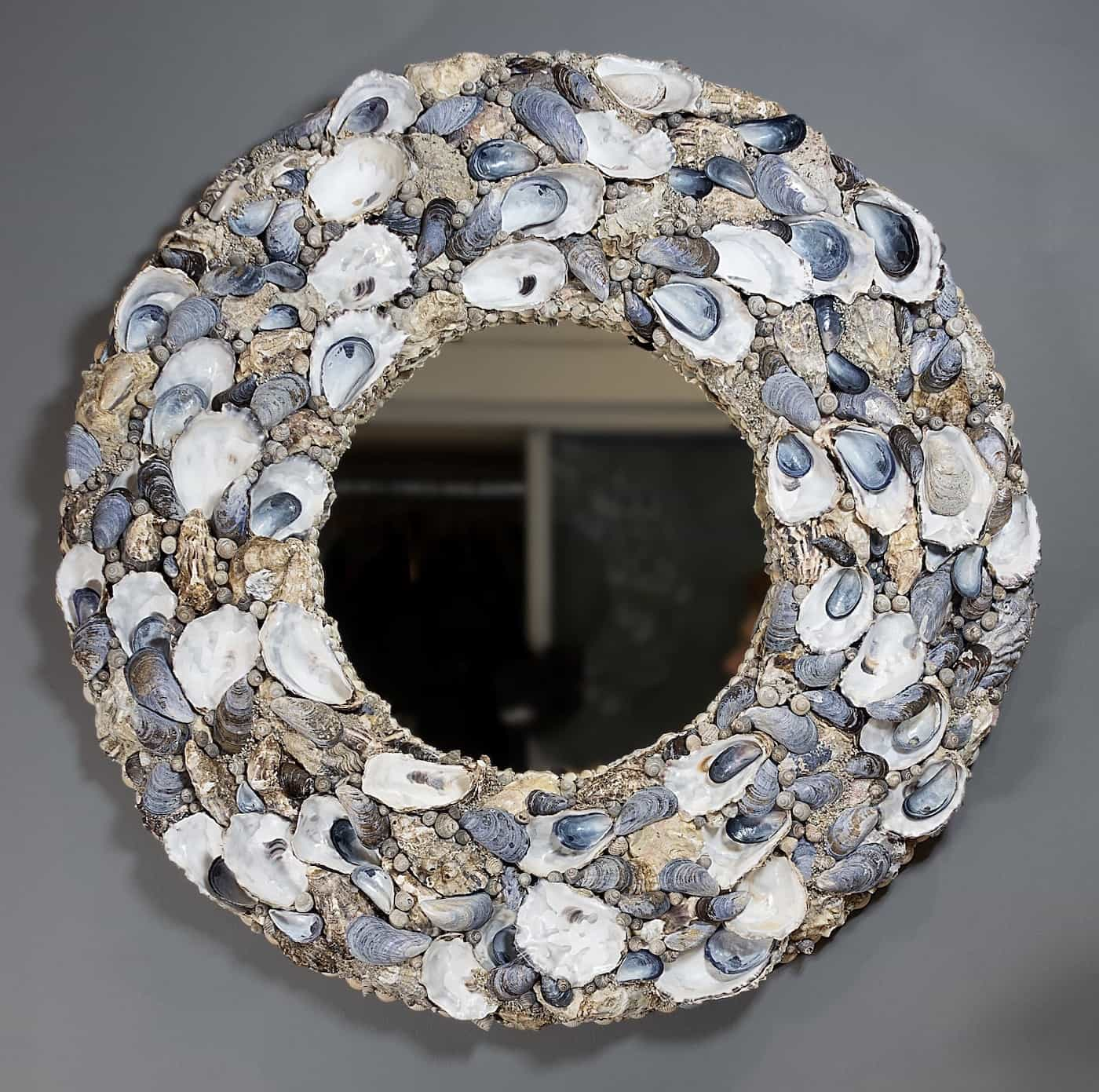
Shellman Scandinavia
“Every Shellman piece is unique – no two are alike.
The mood of the day and inspiration from nature, science, music, pop culture or world events can set us off in any direction. It’s often reflected in our naming of a finished piece. Anything and everything is possible.
We strongly believe in an open mind – immediate dismissal of stupid ideas is a no-no.”
Mikael Hjärtsjö and Buster Eriksson, together ‘Shellman’, work with variable expressions within shell art and present a Scandinavian take on a concept which, even though almost unique in Sweden, is more widespread in for example the UK, France, the Netherlands and Florida, US.
Shellman work in the space where art and crafts meet. The seashells make the paint Mikael and Buster ‘paints’ with and the appearances varies greatly;
“Often hundreds of different seashells end up in an organic and seemingly random fashion, as if we encountered them on the ocean floor. However, it is the frame around the mirror which we contemplate; the eye is drawn from our reflection towards the periphery. Other designs are strictly patterned, sea urchins become stars and galaxies, flowing mussels are accompanied by shimmering seashells, and large barnacles are pieced together into intensely pink sculptures – free-standing or wall-mounted. Each expression demands its own unique creative work process.”
The organic pieces and flowing mussels develop progressively without sketches, possibly with an idea of where on the light-dark scale the finished artwork should be. “We do not sketch, we just do.”
The strictly patterned pieces have a different creative work process. Before the first seashell is placed certain preparations are required. With an overall idea of how the finished artwork should look several different types of seashells are sorted according to colour, form and size.
Regardless of expression or design, all Shellman’s artwork holds the highest quality of craftsmanship. The pieces display an incredible complexity and depth in what Mikael and Buster calls “shell topography”;
”High ambitions always guide our craftsmanship: good enough is not good enough. Final finish is everything – all or nothing at all.”
Read more about Shellman Scandinavia and browse their catalogue
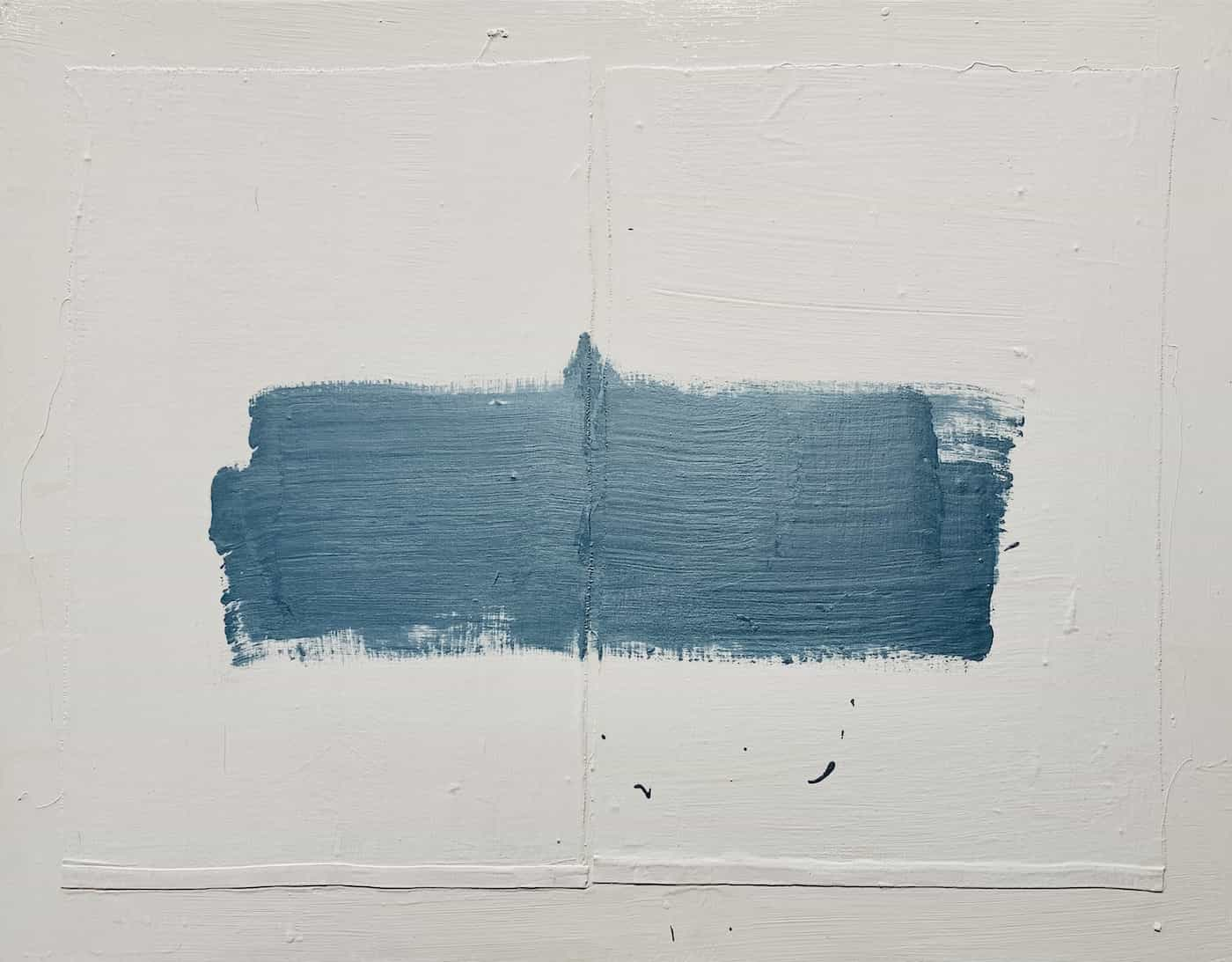
Margareta Sieradzki
With a background in modern dancing, Margareta Sieradzki has developed a characteristic and recognizable artistry, where individual details … to enhance the pure and natural of the brushstrokes;
”Through my dance studies I was trained in pace, dimensions, directions, pitch, precision and flow.
To refine the expression, make it even simpler and to find the way to the spontaneity of the brushstrokes very own beauty has always been my way.”
It is this philosophy that Margareta has brought to her artworks.
A philosophy which stands out particularly in the abstract expressionistic artworks, where the base material as well as the bright colour settings contribute to enhance the shapes of the brushstrokes on the canvas.
But it is this variety of abstract and figurative pieces which lends the exhibition space an imaginative and vibrant diversification without getting caught in a rigid mould, and the viewer is given the opportunity to themselves interpret and experience the motifs.
Read more about Margareta Sieradzki and browse her catalogue
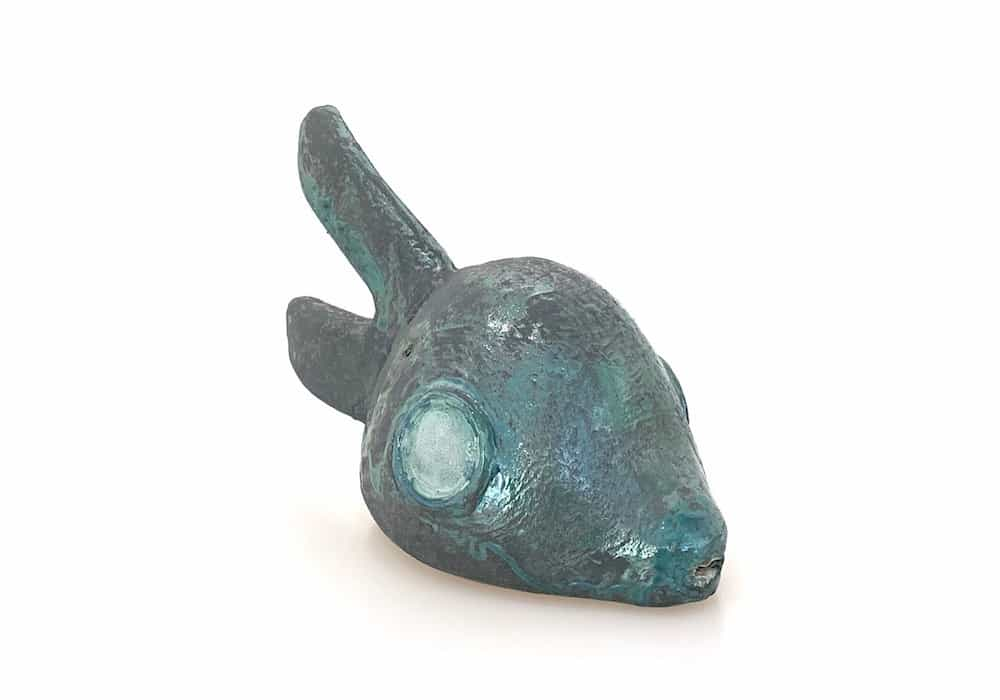
Emanuele Scoppola
What first attracted Scoppola to ceramics is the possibility of making closed forms and working with the internal pressure of air before opening the forms up again. A technique Scoppola denotes Pneumatic shaping.
This technique Scoppola uses especially when creating many of his imaginative and playful fish sculptures and the inspiration behind these eclectic compositions goes back to the sculptor’s earliest childhood;
“In the late 60’s, when I first met fish, their physiology was too complex for my understanding. I thought their bodies were air tanks.
Decades later, I discovered the pleasure of modelling clay shapes using the resistance of the internal air and playing with the pressure of it during the shrinking phase.”
In some of his sculpture, Scoppola has taken the clay-air interaction to yet another level by working them into one or multiple toned ocarinas, giving the artwork an elevated charismatic feature;
“All the ocarinas are an homage to the air that I use for the pneumatic shaping, to give her a voice. I like making fish shaped ocarinas because fish are silent animals. We have the idiomatic expression “muto come un pesce”, silent as a fish. So there is something paradoxical in a fish shaped source of sound, and something tender in kissing a fish.”
Read more about Emanuele Scoppola and browse his catalogue


